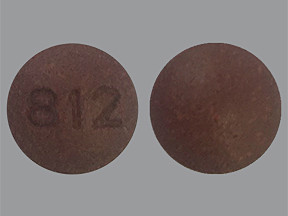PHENAZOPYRIDINE - ORAL
PHONETIC PRONUNCIATION: (fen-ay-zoe-PIR-i-deen)
COMMON BRAND NAME(S): Pyridium
GENERIC NAME(S): phenazopyridine HCl
Uses
USES: This medication is used to relieve symptoms caused by irritation of the urinary tract such as pain, burning, and the feeling of needing to urinate urgently or frequently. This drug does not treat the cause of the urinary irritation, but it can help relieve the symptoms while other treatments take effect. Phenazopyridine is a dye that works as a painkiller to soothe the lining of the urinary tract.
How to use PHENAZOPYRIDINE - ORAL
HOW TO USE: Take this medication by mouth, usually 3 times daily after meals or as directed by your doctor. If you are taking this medication along with antibiotics for symptoms related to a urinary tract infection, or are self-treating, do not take it for more than 2 days without talking to your doctor. Dosage is based on your medical condition and response to therapy. Inform your doctor if your condition persists or worsens.
Side Effects
Precautions
Interactions
Overdose
Images

- color
- reddish-brown
- shape
- 5 sided
- imprint
- VIP102

- color
- reddish-brown
- shape
- round
- imprint
- VIP103
Reviews
Faq for PHENAZOPYRIDINE - ORAL
Phenazopyridine is used to relieve urinary tract pain, burning, urgency, frequency, and discomfort caused by irritation of the lower urinary tract.
Phenazopyridine works by soothing the urinary tract lining and reducing irritation and pain.
Phenazopyridine typically starts working within 1 hour of taking it, providing relief from urinary tract symptoms.
Phenazopyridine is usually taken for no more than 2 days. If symptoms persist beyond that, you should consult your doctor.
Common side effects of phenazopyridine include headache, stomach upset or pain, dizziness, and discoloration of urine (turning it reddish-orange).
Yes, phenazopyridine can interfere with certain urine tests, such as for glucose or ketones. It is important to inform your healthcare provider if you are taking this medication.
You should check with your doctor or pharmacist before taking phenazopyridine with other medications to ensure there are no potential interactions or contraindications.
Phenazopyridine should only be used during pregnancy or breastfeeding under the supervision of a healthcare professional. It is important to weigh the potential benefits against the risks.
Phenazopyridine is available both as a prescription medication and over-the-counter (OTC) in some countries. OTC phenazopyridine is generally limited to shorter durations of use and lower strengths.
Disclaimer
IMPORTANT: HOW TO USE THIS INFORMATION: This is a summary and does NOT have all possible information about this product. This information does not assure that this product is safe, effective, or appropriate for you. This information is not individual medical advice and does not substitute for the advice of your health care professional. Always ask your health care professional for complete information about this product and your specific health needs.





No Reviews Yet